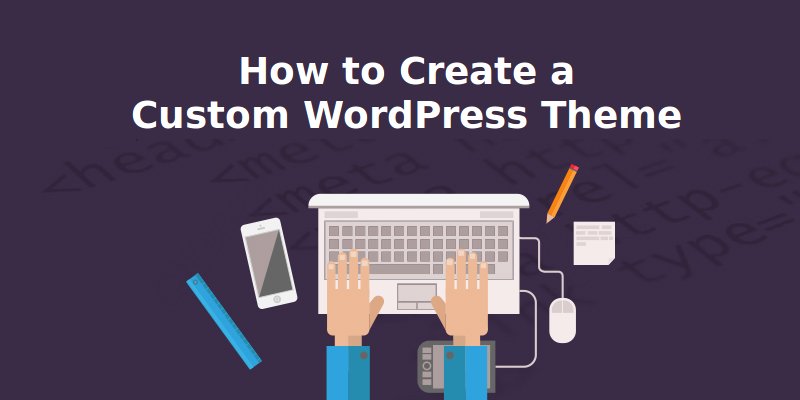Are you passionate about Custom WordPress development and eager to elevate your website design proficiency? Crafting bespoke, Custom WordPress themes from the ground up presents an enriching opportunity to fashion distinct, tailor-made designs for your various projects. This detailed guide is dedicated to unveiling the step-by-step process of crafting a Custom WordPress theme from scratch, empowering you to create truly distinctive digital experiences for your audience
Why create a custom WordPress theme?
Custom WordPress themes offer several benefits, including:
- Unique design: Stand out among the crowd with designs that perfectly match your brand or project requirements.
- Performance optimization: Create themes with only the features you need, resulting in faster load times and better user experience.
- Security: You have full control over your theme code, which means you can prioritize security best practices.
- Versatility: Customize every aspect of your website, ensuring it meets your exact specifications.
- Set up your development environment:
Before you start developing custom themes, you need a local development environment for your WordPress site. Tools like MAMP, WAMP, or XAMPP can help you set up a server on your computer for testing purposes.
Create a new theme folder
Navigate to the “wp-content/themes” folder in your WordPress installation. Create a new folder with a unique name for your theme.
Core Theme Files
In your theme folder, create the two necessary files: ‘style.css’ and ‘index.php’. Your ‘style.css’ file must include the following comments at the top:

Template Files
Your custom theme will be made up of many different template files that control different aspects of your website.
The most basic templates include: –
-‘header.php’: Contains the header section of your website.
– ‘footer.php’: Contains the footer.
– ‘sidebar.php’: For the sidebar, if needed.
– ‘single.php’: Show single messages.
– ‘page.php’: Display individual pages.
– ‘index.php’: Used as the default template for displaying posts.
Customize your theme
Now comes the fun part: customizing your theme. You can edit your template files with HTML, CSS, and PHP to achieve the design and functionality you want.
Enqueue styles and scripts
Use the ‘wp_enqueue_style’ and ‘wp_enqueue_script’ functions to add custom styles and scripts to your theme. This is necessary to maintain best practices and ensure compatibility with other plugins.
Create a Functions.php file
The ‘functions.php’ file allows you to add custom features to your theme. You can save custom navigation menus, widget areas, and more. This is also where you can add hooks and filters to extend core WordPress functionality.
Implementing the WordPress loop
The WordPress loop is the heart of the theme, responsible for displaying posts and pages. You can use loops to customize how content is displayed on your website.
Thoroughly test your theme
Before implementing your custom theme, thorough testing is important. Make sure it is responsive, works properly, and displays perfectly on different devices and browsers.
Security and performance optimizations
Custom themes provide greater control over security and performance. You can implement security best practices like escaping data, using unknown names, and updating code regularly. Additionally, optimize your theme speed by minimizing HTTP requests, leveraging caching, and optimizing images.
Deploy
Once you’ve thoroughly tested your custom theme and made any necessary improvements, it’s time to deploy it to your live site. Make sure you have backups in place and a plan to handle any potential issues during deployment.
Ongoing Maintenance
Custom themes require ongoing maintenance. Stay up to date with the latest versions of WordPress and regularly review and optimize your code to maintain security and performance.
Conclusion
Creating a custom WordPress theme from scratch is a commendable endeavor for developers. It provides the flexibility to create unique designs and maintain control over performance and security. By following these steps, you will gradually become a competent custom theme developer. Remember to continue learning and staying up to date with the latest web development trends and best practices to continue creating exceptional websites. Whether you’re working on a personal project or developing themes for clients, custom WordPress themes are a valuable skill that can set you apart in the world of web development.


